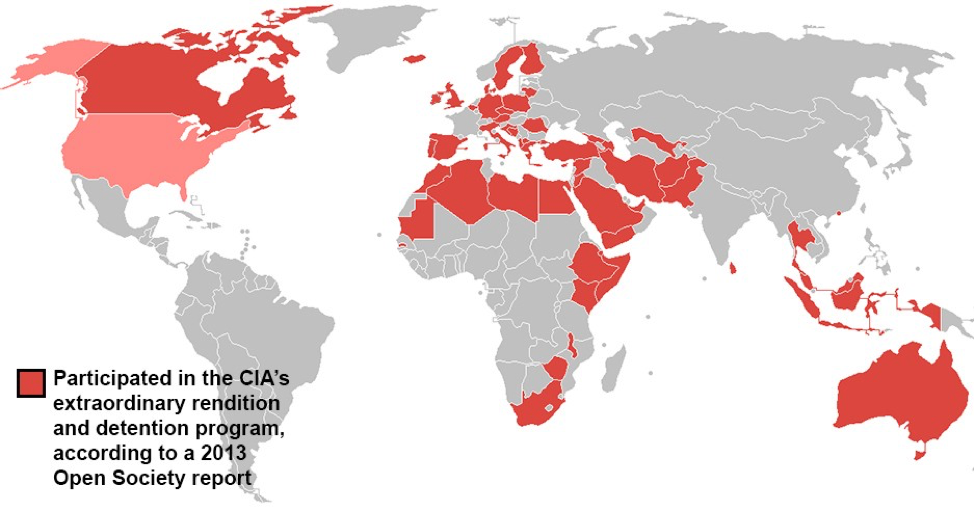
[Author’s note: A major aspect of the CIA’s detention and interrogation operations has been purposefully hidden from view, primarily due to secrecy guidelines that make it illegal for anyone to “read into” the program to reveal even its very existence.
Recently declassified documents make clear that there was not one, but two CIA torture programs. These programs used different interrogation techniques, responded to different bureaucracies within the CIA, and had very different levels of oversight.
This article reveals for the first time a crucial untold aspect of the story behind the construction and development of the CIA’s torture programs, such as we can understand them today.
I will try to retell the history of the CIA’s interrogation and detention programs with this new understanding of how they originated, were constructed, and how they operated. This revisionist history is open source document-based, and it’s worth noting that there is much disinformation and obscure history to clarify.
At the close of this article, we will look at some possible reasons for the separation of the two programs, and the meaning of all this for current investigators and concerned citizens — Jeffrey Kaye]
It’s been sixteen years since Gul Rahman died of hypothermia, beaten and left half-naked and short shackled to a bare prison floor at the CIA-run Salt Pit “black site” prison in Afghanistan. It is not known what the CIA did to his corpse. His body was never turned over to his family.
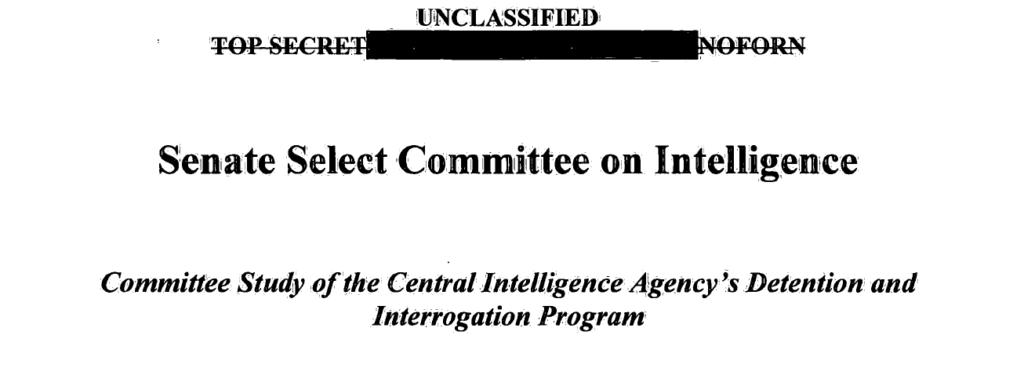
According to a report by the Senate Select Committee on Intelligence (SSCI), conditions at the Salt Pit were incredibly awful: “One senior interrogator, told the CIA Office of Inspector General (OIG) that ‘literally, a detainee could go for days or weeks without anyone looking at him,’ and that his team found one detainee who, ‘as far as we could determine,’ had been chained to the wall in a standing position for 17 days.”
Yet in other documents, we are told that CIA detainees were under constant surveillance. When Abu Zubaydah was locked inside a confinement box by CIA torturers, there were cameras transmitting “grainy video” of him inside the box at all times. The amount of time spent in extended sleep deprivation was meticulously monitored for some detainees, but not others.
How could there be such wide divergence in CIA torture operations? What was going on?
A Secret Program on “Enhanced Interrogation”
Twelve years ago, in September 2006, the CIA’s “enhanced interrogation” and detention program essentially ended, when the remaining detainees held at CIA black sites around the world were sent to Guantanamo’s Camp 7. Its final demise can be traced to President Obama’s January 2009 withdrawal of the Bush-era Department of Justice memos which justified the use of waterboarding, extended sleep deprivation and other brutal interrogation techniques.

Four years have passed since a partial release of findings from a years long investigation into CIA interrogation practices by the Senate Select Committee on Intelligence, yet only now are the full parameters of the CIA’s black site torture programs becoming clear.
A November 2018 ACLU document release of a 90 page memoir by the chief of the CIA’s Office of Medical Services (OMS) revealed there were two torture and interrogation programs run by the CIA.
Not one report on that release mentioned the revelation about the two programs, and none have commented on the importance given in this document to the actions of the CIA’s Office of Technical Services in relation to the torture program. (See the full embedded document at end of this article.)
The OMS document is a devastating look into the mind and conscience of the CIA doctors and psychologists who helped conduct the CIA torture program. The memoir is remarkably self-serving, and yet also revealing, providing us the clearest view yet of the true parameters of the CIA’s use of torture during the Bush Administration.
Much that is perplexing about CIA torture operations — and one aspect of how the CIA is able to mask its covert actions around torture and detention — can be traced to the confusion surrounding the fact that there really were two interrogation programs all along.
One program was built around the testing of the “enhanced interrogation” techniques (EIT) derived from the military and the CIA’s own torture survival courses, which were meant to inoculate U.S. government personnel to the effects of torture at the hands of foreign captors. This EIT program was carefully planned and staffed by the CIA’s Office of Technical Services (OTS), and seems to have originated there as well.
Though they were not involved in its planning, the program also involved close monitoring by medical personnel staff and contractors in the CIA’s Office of Medical Services. OMS’s value to the program increased with time.
When, according to the head of OMS, the EIT-focused program’s existence was threatened in 2004–05, new Department of Justice memos approving the program “relied heavily and explicitly on OMS input, and underscored as never before an indispensable OMS role in legitimizing the program,” which included ongoing use of the waterboard.
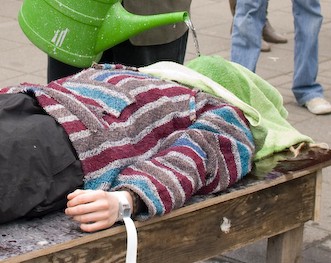
Karl Gunnarsson, licensed via Creative Commons
The OTS-run program was known as the Rendition, Detention and Interrogation (RDI) Program, and operated as a special mission or special access program within the Special Mission Division (SMD) of the CIA’s Counterterrorism Center (CTC). In documents, it was also referred to at times as the Rendition Group, and the Rendition and Detention Group.
Then, there was the other CIA program, which largely had different personnel, was run totally out of CTC, and was not organized around the use of “enhanced interrogation.”
We will examine first the special mission portion of the CIA torture and detention program. Later in this article we will look more closely at the other CTC detention and torture program. Both programs utilized renditions, and had some kind of connection with foreign intelligence services.
The origins of the RDI program apparently lie within the CIA’s Office of Technical Services, a CIA division known for producing James Bond-like technical gadgets, forgery, secret writing, and assassination devices.
According to the SSCI report on CIA interrogation, it was OTS that in April 2002 cabled the CIA interrogation group holding Abu Zubaydah, considered the CIA’s first captured high-value terrorist, regarding its new “proposed interrogation strategy.”
Even earlier, OTS commissioned James Mitchell to write a monograph on Al Qaeda resistance to interrogation techniques.
From a larger perspective, it is worth noting that according to one declassified CIA document, in general, OTS receives its orders “through higher echelons (Office of the Director or Deputy Director for Operations).”
Roots in MKULTRA
OTS is also known for administering the CIA’s infamous MKULTRA program some decades ago. This fact did not go unremarked by the CIA’s OMS Chief.
According to his or her narrative, OTS contained a group of “operationally-oriented psychologists whose interests in interrogation extended back almost 50 years….”
While speculative, the 2002 incarnation of this group was possibly the Operational Assessments Division at OTS under CIA psychologist Kirk Hubbard. Hubbard has been linked a number of times to CIA contract psychologists James Mitchell and John Bruce Jessen, who have themselves been linked to construction of the “enhanced interrogation” techniques program, although they certainly weren’t alone in doing this.
The OMS Chief explained:
“The antecedents of this unit had overseen much of the MKULTRA interrogation research in the 1950s and 1960s, published still-relevant classified papers on the merits of various interrogation techniques, contributed heavily to a 1963 KUBARK Counterintelligence Interrogation Manual and its derivative 1983 Human Resources Manual, assisted directly in early interrogations, and (with OMS) provided instruction in the Agency’s Risk of Capture training.”
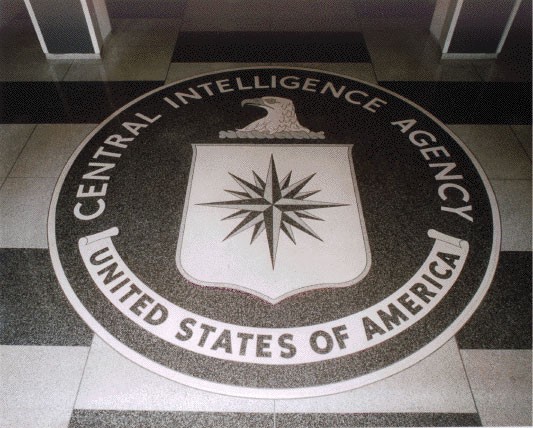
The “Agency interest in interrogation” had begun “very early, and continued into the early Eighties, but was not a direct antecedent of the 2002 CTC approach, which came directly from Jessen and Mitchell’s SERE experience,” according to the OMS Chief’s account.
Still, “[b]oth SERE and initial Agency thinking, however, drew on the same early Agency and military-funded studies.”
But the Senate report clearly shows that old thinking and studies were not the only factors involved.
According to SSCI, the person chosen in late 2002 to be the “CIA’s chief of interrogations in the CIA’s Renditions Group, the officer in charge of CIA interrogations” had been elevated to his post despite having earlier been accused of “inappropriate use” of torture techniques drawn from the MKULTRA-inspired 1983 Human Resources Manual.
In 2002, Mitchell, Jessen and “other OTS psychologists,” in conjunction with “various [outside] psychologists, psychiatrists, academics, and the [Pentagon’s SERE office] Joint Personnel Recovery Agency,” provided data on the supposed safety and “effectiveness” of the proposed “enhanced interrogation” techniques to Department of Justice attorneys.
OTS would also provide the important interrogator and psychological staff sent to the black sites in the early days. One OTS early hire, even prior to 9/11, was former SERE psychologist and self-styled interrogation expert, James Mitchell.
SERE stands for Survival, Evasion, Resistance, Escape. The military’s SERE program under various names goes back to the late 1940s, born out of a need to train pilots involved in secret operations against the Soviet Union, which involved numerous covert flights over Soviet territory. The training included an experience in a mock torture and detention setting, purportedly to inoculate U.S. personnel against foreign imprisonment and torture.
Over time, the mock torture schools also became sites of experimental study. In addition, the CIA, it turns out, also ran its own separate version of SERE, though little is known about its operations.
Mitchell and Jessen, who previously worked for SERE, and other OTS personnel, apparently in consult with “outside experts,” would take the techniques used to make the SERE torture experience realistic and turn them on CIA prisoners in makeshift secret “black site” prisons situated around the world.
“Special mission interrogations”
The CIA’s RDI program was also referred to at other times in various documents as the Rendition Group (RG), the Rendition and Detention Group (RDG), or more simply as Special Mission interrogation, as the operation was run under the authority of the Special Mission Division (SMD) of the CIA’s Counterterrorism Center (CTC).
SMD special missions are likely constructed as Special Access Programs, with levels of secrecy that exceed Top Secret/Sensitive Compartmented Information levels of security. Knowledge of such programs are compartmented on a strict need-to-know basis, and are typically unacknowledged. Revealing such a program can land you in jail.
Special access programs are authorized by Executive Order 13526, “Classified National Security Information.” On the other hand, the non-RDI CIA detention and interrogation program authorization was derived from the September 17, 2001 Memorandum of Notification (MON) signed by President Bush.
The MON specifically authorized CIA to direct “operations designed to capture and detain persons who pose a continuing, serious threat of violence or death to U.S. persons and interests or who are planning terrorist activities.” It did not, one can see, authorize the construction of a new set of interrogation techniques, or to run a torture program.
As an example of how such secrecy works, by Spring 2003, after a bureaucratic struggle between OMS and OTS over the staffing and operations of the RDI program, most of the OTS contractors (including apparently Mitchell and his partner, John Bruce Jessen) had been transferred from OTS to the RDI group at CTC. From that point forward, even “OTS managers were not to be briefed on the compartmented portions of the program,” according to the head of OMS.
No doubt much of the CIA’s aggravation over the release of a portion of the Senate Intelligence Committee’s review of their torture and detention activities is because the RDI program is named at various points in the report’s Executive Summary, which was released in redacted form to the public.
Previous references to RDI or OTC in relation to the torture program — as in the release of the CIA’s 2004 Inspector General Report on detention and interrogation activities — were very few and had no context about what they really meant to the CIA program
Still, the references to RDI in the Senate report were mostly relegated to footnotes, and also provided no context. Nowhere in the released report is there an explanation that the RDI program was separate in any way, or that it was run from a different department from the rest of the interrogation and detention program. There is no mention of the CIA’s Special Mission Division. In the end, the Senate report obfuscated the separation between the RDI and the CTC programs.
The RDI program held dozens of so-called High-Value Targets or detainees over the course of its existence. It received, by the account of its own chief medical official, “extraordinary guidance and oversight.” Its overt mission was to gather imminent information of terrorist attacks on the United States. Its other goal appears to have been human subject or prisoner research on the effects of the CIA’s “enhanced interrogation” set of techniques.
Surprisingly, some of the pressure to conduct experiments on the effectiveness of the individual techniques like waterboarding came from top CIA officials and Bush administration officials, including the CIA’s own Inspector General, as well as members of Congress. At that point, both OMS and Mitchell and Jessen argued against such effectiveness experiments, claiming that such data could not be quantified.
Interrogation, or we might say torture, is not a science, but a (dark) art, Mitchell and Jessen argued to their superiors.
The “CTC Program” and “Standard” Techniques of Interrogation
The CIA’s other torture program was known by differing names: Counterterrorism Detention and Interrogation Activities (CDIA) or Program, the “CTC Program,” or, as the Senate Select Committee on Intelligence called it, simply, the CIA Detention and Interrogation Program. That program did not have OMS oversight (until after a detainee died in its custody), nor did it have ongoing authority to use “enhanced interrogation” techniques (though they may have used some of them).
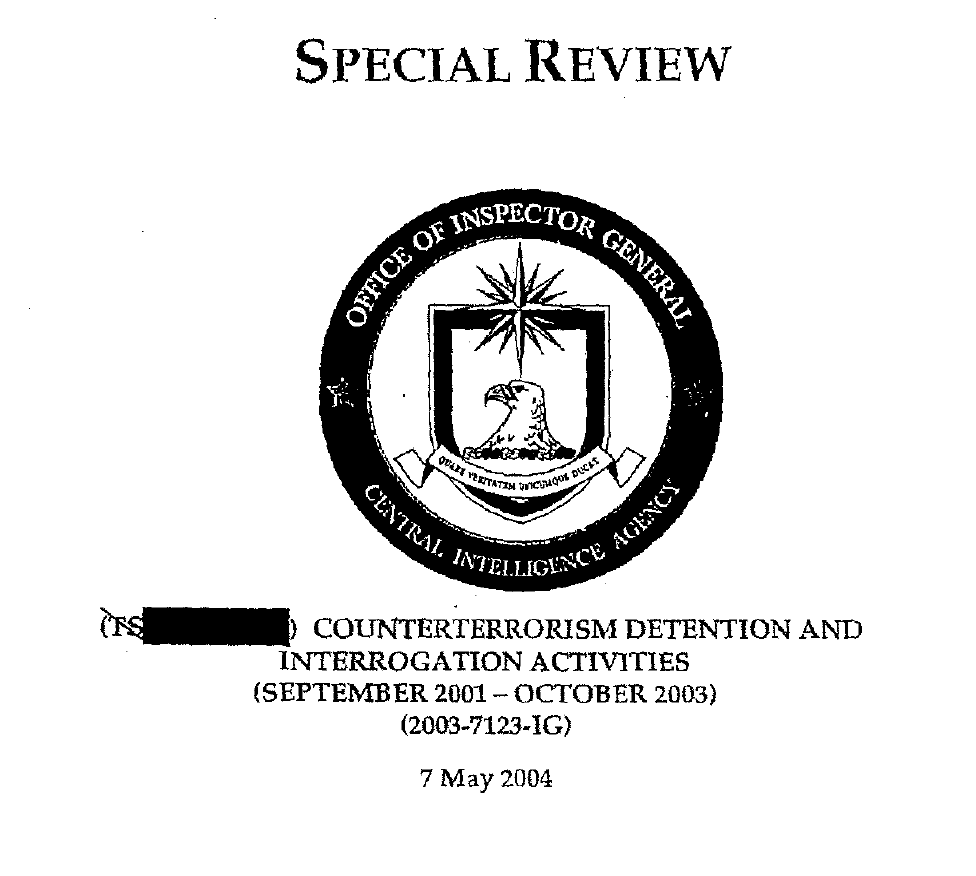
According to the CIA’s Chief at OMS, the non-RDI program had “no written interrogation guidelines… nor was OMS advised of interrogations…. Interrogators… [were] left to their own devices, [and] sometimes improvised.”
The CIA black sites under CTC supervision were not well supervised initially. These prisons were generally not holding high-value detainees, but prisoners deemed of some intelligence use from the wars in Iraq and Afghanistan. The black sites run under this program included the notorious Salt Pit prison in Afghanistan, and most likely a CIA black site within Abu Ghraib prison.
While the RDI program required medical check-ups before and after interrogation, and full psychological assessments on prisoners, the CDIA program required none of that. When a medical issue arose, a physician’s assistant on temporary duty was sent to the black site to attend to the problem. At the RDI sites, doctors were always in attendance.
The CDIA program utilized so-called “standard” CIA interrogation techniques. According to the CIA’s OMS chief, these included those “deemed not to incorporate significant physical or psychological pressure.”
This CIA program supposedly did not include “enhanced interrogation techniques, “but early on was granted permission to employ sleep deprivation, solitary confinement, noise, and eventually standing sleep deprivation, nakedness and cold showers. As these were not ‘enhanced’ techniques, no medical monitoring function was specified….”
The “standard” techniques did include, however, sleep deprivation (at first up to 72 hours, but later no more than 48 hours), diapering (not to exceed 72 hours), reduced caloric intake (aka partial starvation, but supposedly adequate to maintain general health), isolation, loud music or white noise, and denial of reading material.
It is unclear where CIA derived the authorization to use these so-called standard techniques. Their use may derive from the February 7, 2002 decision by the Bush Administration that Taliban and Al Qaeda prisoners were not covered by Geneva Convention protections. Or they may stem from an alleged secret executive order by President Bush that allowed use of “stress positions,” sleep “management,” loud music and “sensory deprivation through the use of hoods, etc.,” reported in a May 2004 FBI email.
The CDIA interrogators reportedly improvised techniques at these black sites, including blowing smoke in detainees’ faces, “physically aggressive ‘hard takedowns’, and staged ‘executions.’”
According to the Chief, OMS, “The only death tied directly to the detainee program took place in this context at” the Salt Pit prison. That black site was not part of the RDI/OTS program.
After the death of the detainee, Gul Rahman, RDI was given responsibility for the site, while OMS took over “psychologist coverage” there. In addition, from that point onward “prior approval” was needed for use of such “standard” techniques as described above, “whenever feasible.”
“Truth Drugs”
The ACLU’s release of the OMS document had a big play in the news because a portion of it discussed the possibility, supposedly discarded, of using the tranquilizer Versed as a “truth drug” on CIA detainees held in the RDI program. But CIA reticence to request legal clearance to use drugs — a clearance actually granted with caveats in John Yoo’s famous August 2002 torture memo — was in part due to fears it would spawn charges regarding the “prohibition on medical experiments on prisoners.”
If CIA was not conducting such medical experiments, why was it afraid it would be charged with doing so? OMS officials seem to have been keenly aware at how close their operations were to breaking federal laws on illegal experimentation on prisoners. They also were worried about a longtime ban on the interrogational use of “mind-altering” drugs which “profoundly altered the senses.”
The OMS document refers to an article by George Bimmerle (a pseudonym) on “truth drugs.” In the 1950s, Bimmerle worked for the Behavioral Activities Branch (BAB) at CIA’s Technical Services Division, the forerunner to OTS. It was BAB staff that helped assemble the notorious CIA “KUBARK” interrogation manual, which as far back as 1963 advocated, with reservations, the use of various torture techniques, including use of hypnosis and drugs.
KUBARK was a code name for the CIA itself, and was one way the Agency referred to itself within internal documents.
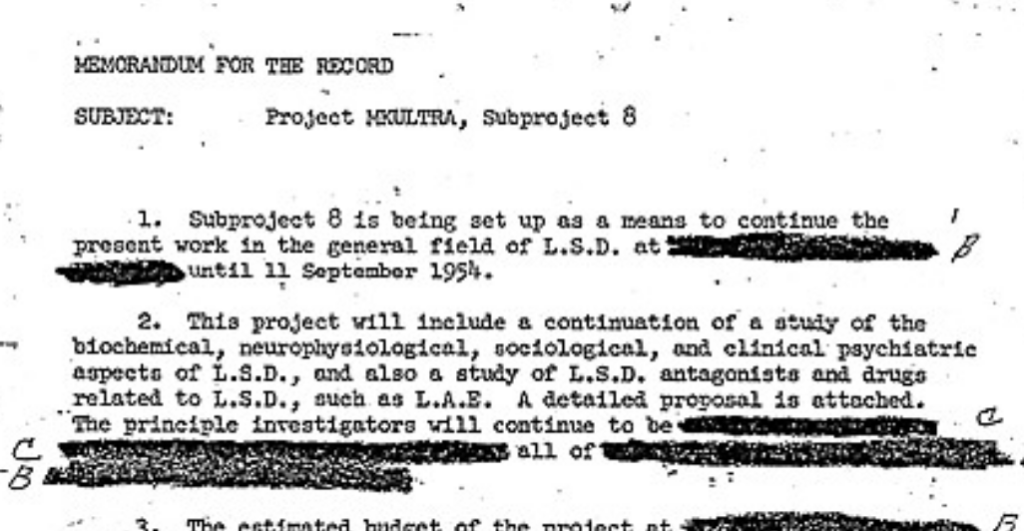
According to the OMS history, “In 1977 the Agency introduced the text of Bimmerle’s article, without title, author, date or sourcing into Congressional Hearings on MKULTRA, as a statement of then current thinking on drugs in interrogation. LSD received only the passing comment that ‘information obtained from a person in a psychotic drug state would be unrealistic, bizarre, and extremely difficult to assess… Conceivably, on the other hand, an adversary service could use such drugs to produce anxiety or terror in medically unsophisticated subjects unable to distinguish drug-induced psychosis from actual insanity.’
OMS may have been reluctant to use “truth drugs,” but its Chief found that drugs labeled as such can sometimes cause “some amnesia,” which he found constituted “a sometimes desirable secondary effect.” Induction of amnesia was a goal of some of the MKULTRA experiments conducted in the 1950s-1970s, according to a number of accounts, including this one in Smithsonian Magazine.
OMS’s Chief was cagey when discussing the possible use of drugs in his personal memoir. He (or she) noted that when a Congressional committee asked the CIA why they didn’t use drugs on prisoners, an Agency official responded. “The answer was that drugs don’t work — which is true, probably.” (Italic emphasis added.) Probably?
But more likely OMS reluctance regarding use of drugs would raise questions about illegal experiments, and the RDI program was already vulnerable to such charges given its use of medical monitoring and adjustment for “techniques” like waterboarding via use of devices that monitor oxygen levels, or because of aspects of the experimental program that have not yet been revealed.
The use of drugs, so explosive when revealed in the scandals around MKULTRA, could be a trigger to investigations. Some in the Agency could perhaps recall the days when the New York Times ran headlines like “Abuses in Testing of Drugs by C.I.A.”, and when use of drugs by the CIA was a focus of Congressional investigations.
All in all, the controversies around CIA use of “truth drugs” deserve greater examination.
We do know that the CIA certainly used drugs that were not standard truth drugs to facilitate “enhanced interrogations,” a fact also ignored in mainstream media accounts about CIA’s torture operations.
For instance, OMS doctors administered blood thinning drugs to prolong detainees’ ability to physically tolerate stress positions used in standing sleep deprivation without seriously causing damage from tissue edema. They may also have administered antimalarial and other drugs because of the disorienting and incapacitating effects these drugs can sometimes produce.
While the Chief of OMS wrote that OMS “scrupulously avoided involuntarily medicating detainees” in the RDI program, that doesn’t mean that OTS interrogators did not utilize drugs, or that drugs weren’t administered outside the RDI program.
Besides the musings about “truth drugs,” another revelation in the release of the OMS Chief’s memoir concerned ongoing collaboration between the U.S. federal Bureau of Prisons (BOP) and the CIA on the operations of the latter’s secret black site detention program.
According to the OMS account, the CIA saw their collaboration with BOP as a possible defense for any CIA/OMS doctors or psychologists brought up on ethics charges at state licensing boards. If a licensing board moved against any CIA medical personnel, “Bureau of Prisons policy and medical personnel would be similarly implicated.”
Using “Quality Control” as a Way to Skirt Federal Laws Regarding Experiments on Prisoners
Anxiety over being charged with violation of Federal laws regarding experiments on prisoners arose again when the CIA Inspector General pressured OMS to conduct “effectiveness” studies on “each interrogation technique and environmental deprivation.”
According to the OMS document, in May 2004 the CIA Inspector General, “noting the uncertainty about the effectiveness and necessity of individual EITs, formally recommended that the DDO [Deputy Director of Operations], together with OMS, DS&T [Department of Science and Technology] and OGC [Office of General Counsel], ‘conduct a review of the effectiveness of each of the authorized EITs and make a determination regarding the necessity for the continued use of each, including the required scope and duration of each technique.’ Outside representation was to be included on the review team.”
OMS complained they did not have “sufficient outcome data to make this assessment and that were the data provided there needed to be some written assurance that a ‘study’ of this sort would not violate Federal law against experimenting on prisoners.”
Of all people, James Mitchell and Bruce Jessen came to OMS’s defense, arguing that it was impossible to quantify effectiveness in the way the CIA IG wanted. They saw interrogation as an art, more than a science. Of course, others would see their version of interrogation as torture.
“In this process,” they wrote, “a single physical interrogation technique is almost never employed in isolation from other techniques and influence strategies, many of which are not coercive. Rather, multiple techniques are deliberately orchestrated and sequenced as a means for inducing an unwilling detainee to actively seek a solution to his current predicament….”
Instead, the Chief of OMS, who indicated there were only 29 EIT “cases” up to that point, maintained that an effectiveness analysis could be considered a matter of “‘quality control’ rather than human subjects research.” While such “analysis… would be rather limited. Nonetheless, insights were considered likely to emerge.”
In other words, hypotheses about effectiveness were to be established and proved or disproved. The effectiveness research, labeled “quality control,” would have amounted to an illegal program of human experimentation, and OMS was acutely aware they were crossing or about to cross a very serious line.
Adhering to the fig leaf of “quality control,” RDI “proposed in early 2005 that an internal review be undertaken by a small team composed of a senior person from the Counter Intelligence Center, the recently retired [short redaction] Medical Services, and possibly a psychiatrist.”
But this small team was never assembled. Instead, the CIA Inspector General dropped the idea of a “blue ribbon” review, and proposed an entirely outside panel that would examine the effectiveness of the EITs.
This aspect of the story was reported back in 2009 in most of its particulars by Greg Miller at the Los Angeles Times. What Miller didn’t know or understand was that the question of judging effectiveness of the program immediately raised ethical issues around research on prisoners.
Two outsiders, Gardner Peckham (an adviser to Newt Gingrich) and John Hamre, Deputy Defense Secretary in the Clinton administration and President and CEO of the important Washington think tank, Center for Strategic and International Studies, were picked for the job.
Both Peckham and Hamre “endorsed the RDG program.” Both found it difficult to assess techniques objectively. Peckham recommended keeping the waterboard. Hamre noted that the most effective techniques seemed to him to be the “conditioning EITs [sleep deprivation, dietary manipulation]” (brackets in original).
Hamre also concluded, “‘the data does suggest that EITs, when incorporated into a comprehensive program based on sound underlying intelligence and analysis, did provide useful intelligence products.”
A Program of “Applied Research”
“RDI” or “RDG,” or whatever its different names, always referred to a separate, highly classified program under the auspices of the CIA’s Counter Terrorism Center’s Special Mission Division (CTC/SMD). This program was experimental in nature and consisted of scientifically developing a set of brutal interrogation techniques derived from the military and CIA’s own torture survival training programs.
The development of these “enhanced” set of techniques, which included waterboarding and a complex form of extended sleep deprivation, was the work of the CIA’s Office of Technical Services. When former military psychologists James Mitchell and Bruce Jessen joined the RDI unit, they were initially tasked as contract employees for OTS to work on research-related issues.
In an important 2016 article by Greg Miller in the Washington Post, which also posted the non-classified CIA contracts for Mitchell and Jessen, it was revealed that James Mitchell, identified in an investigation by the Senate Select Committee on Intelligence (SSCI) as a chief architect of the CIA’s torture program, was first hired by CIA’s OTS before 9/11.
Mitchell’s initial contract was to “identify reliable and valid methods for conducting cross-cultural psychological assessments,” and to “identify the current state of behavioral science on theories and methods for influencing attitudes, beliefs, motivation and behavior,” particularly from individuals from “non-Western countries.”
After 9/11, at latest by December 2001, Mitchell’s contract changed, and his job now was to “guide” his employer, the name of which was redacted in the document but was likely OTS or CDC/RDI, in shaping “the future direction of Sponsor’s applied research effort.”
Mitchell was also to provide “consultation… regarding applied research in high-risk operational settings… applying research methodology to meet mission goals and objectives” for OTS.
What these “mission goals and objectives” were are unknown, but if revealed, would bring us to the heart of the OTS-inspired “enhanced interrogation” torture program.
Mitchell also was to conduct “specified, time-limited research projects” as identified by his employer. As referenced in the SSCI report, Mitchell discussed his approach and his background in a memo, February 1, 2003, “Qualifications to provide special mission interrogation consultation.”

Despite contentions by a number of observers and the Senate Intelligence Committee report that Mitchell had no interrogation training, according to his document, he received interrogation training at JPRA SERE Psychology conferences, including a “multi-day course with laboratory.” By February 2003, he had “more than 550 hours of experience (hut time) interrogating or debriefing known terrorists.”
The entire question of illegal research on “war on terror” detainees remains largely unaddressed in mainstream accounts on the torture scandal.
In the past, I have documented discussions regarding research on detainees from a number of different sources, as published in my book, Cover-up at Guantanamo. Some of these discussions among government linked contractors involved the importance of being “read in” to the classified research programs.
Many Questions
The realization that the CIA program was actually two different, though associated, programs means that much of what we know or believe we know about use of CIA torture needs to be reexamined.
For instance, how exactly did the use of rendition differ between the two programs, if it did at all? Were foreign intelligence programs, or portions of them, “read into” the RDI program and involved in any aspect of the calibration of the torture techniques by CIA?
Or what about the fact that current CIA director Gina Haspel was tasked in 2002 to run a prison involved in the RDI program? Questions that should have been asked during her confirmation hearing about the use of illegal experimentation on CIA prisoners were never asked.
The most salient question is why have two different programs at all? I think this question is open to far-reaching analysis, but I believe at least one functional aspect was to make it harder to determine what was going on in both of the programs.
The many issues regarding illegal experimentation brought up by OMS personnel raise pressing questions about the nature of the CIA’s entire operation. The conflation of the two different programs into one CIA program has served to obfuscate the experimental nature of the singular RDI program.
In June 2017, Physicians for Human Rights published a report, authored by Dr. Scott Allen, demonstrating that the CIA’s post-9/11 torture program constituted a regime of illegal human experimentation.
The PHR report corroborates the argument, as contained in this article, that the CIA was involved in illegal experiments, and knew they were in violation of the law. The report also describes how the CIA violated the strictures on experimentation.
But the report fails to note the key role of the OTS or the RDI group, nor does it seem to understand that two bureaucratically separate torture programs were at work. It is one goal of this article to spur action by Congressional investigators or other proper authorities regarding PHR’s revelations about CIA’s illegal human experimentation.
There are many other questions. For instance, what did it mean that at times the two programs shared personnel, as when Mitchell and Jessen were involved in the interrogation of Gul Rahman at the Salt Pit prison?
The supposedly more regulated aspect of the RDI program did not mean that it was free of “improvisations” or “excesses” beyond the DoJ-approved interrogation/torture techniques. In particular, the OMS report comments on the brutal treatment of accused high-level detainee, Abd al-Rahim al-Nashiri, the so-called “mastermind” of the bombing of the USS Cole.
According to the Chief of OMS, al-Nashiri was a “target” of early “excesses” by RDI staff, supposedly because his “immaturity regularly provoked” them.
As a result, at one point an OMS physician assistant had to intervene in al-Nashiri’s interrogation to prevent abuse. At other times, when the physician assistant and interrogation team were absent, a “debriefer” hooded al-Nashiri, and threatened him with a gun and a drill.
The OMS Chief tersely noted of this interrogator, “He was disciplined.”
The ramifications of the CIA having two torture programs needs to be addressed by all commentators. For instance, while the famous John Yoo and Stephen Bradbury torture memos are understood as having authorized the CIA’s “enhanced interrogation” or RDI program, the question remains as to who or what authorized the CTC program at non-RDI black sites. Did OLC authors understand they were legitimating a highly covert and compartmentalized operation?
In an upcoming article, we will turn to the conflict that arose between OTS and OMS in the administration of the RDI program, and how OMS contended with issues surrounding medical ethics, “dual loyalties” among medical personnel, and the criticisms of external “activists” about the EIT torture program.

This article originally appeared on Dec 16 in The Medium.com: https://medium.com/@jeff_kaye/revealed-there-were-two-cia-torture-programs-151bb80d69c1
CovertAction Magazine is made possible by subscriptions, orders and donations from readers like you.
Blow the Whistle on U.S. Imperialism
Click the whistle and donate
When you donate to CovertAction Magazine, you are supporting investigative journalism. Your contributions go directly to supporting the development, production, editing, and dissemination of the Magazine.
CovertAction Magazine does not receive corporate or government sponsorship. Yet, we hold a steadfast commitment to providing compensation for writers, editorial and technical support. Your support helps facilitate this compensation as well as increase the caliber of this work.
Please make a donation by clicking on the donate logo above and enter the amount and your credit or debit card information.
CovertAction Institute, Inc. (CAI) is a 501(c)(3) non-profit organization and your gift is tax-deductible for federal income purposes. CAI’s tax-exempt ID number is 87-2461683.
We sincerely thank you for your support.
Disclaimer: The contents of this article are the sole responsibility of the author(s). CovertAction Institute, Inc. (CAI), including its Board of Directors (BD), Editorial Board (EB), Advisory Board (AB), staff, volunteers and its projects (including CovertAction Magazine) are not responsible for any inaccurate or incorrect statement in this article. This article also does not necessarily represent the views the BD, the EB, the AB, staff, volunteers, or any members of its projects.
Differing viewpoints: CAM publishes articles with differing viewpoints in an effort to nurture vibrant debate and thoughtful critical analysis. Feel free to comment on the articles in the comment section and/or send your letters to the Editors, which we will publish in the Letters column.
Copyrighted Material: This web site may contain copyrighted material the use of which has not always been specifically authorized by the copyright owner. As a not-for-profit charitable organization incorporated in the State of New York, we are making such material available in an effort to advance the understanding of humanity’s problems and hopefully to help find solutions for those problems. We believe this constitutes a ‘fair use’ of any such copyrighted material as provided for in section 107 of the US Copyright Law. You can read more about ‘fair use’ and US Copyright Law at the Legal Information Institute of Cornell Law School.
Republishing: CovertAction Magazine (CAM) grants permission to cross-post CAM articles on not-for-profit community internet sites as long as the source is acknowledged together with a hyperlink to the original CovertAction Magazine article. Also, kindly let us know at info@CovertActionMagazine.com. For publication of CAM articles in print or other forms including commercial internet sites, contact: info@CovertActionMagazine.com.
By using this site, you agree to these terms above.
About the Author

Jeffrey S. Kaye graduated from the University of California, Berkeley in the 1980s. After working as a cab driver, an assistant casting director, a proofreader, a typographer, and assorted odd jobs, he settled down and became a clinical psychologist in his middle age.
He retired from his psychotherapy practice in 2017. Dr. Kaye also taught Adult Development and History and Systems of Psychology to Bay Area graduate students in psychology.
For nearly 10 years he worked part time with Survivors International in San Francisco, conducting both assessment and psychotherapy of torture victims. After 9/11, he joined others in protesting the activities of psychologists in the CIA and Department of Defense, some of whom who helped develop interrogation programs that have widely been exposed as including torture and other forms of cruel treatment of prisoners. Cover-up at Guantanamo is his first eBook. He has published articles on torture and other subjects at Truthout, The Guardian, Al Jazeera America, Alternet, and other online websites.











Free Stuff, Freebies & Free Samples in the UK http://www.cravefreebies.com Updated Daily! We have free samples, discount codes, competitions, vouchers, coupons & plenty more!
Hi there, I read your blogs on a regular basis. Your humoristic style is witty, keep it up!
Its like you read my thoughts! You appear to know
so much about this, like you wrote the ebook in it or something.
I believe that you simply can do with a few percent to power the message house a bit, but other
than that, this is excellent blog. A fantastic read.
I’ll definitely be back.
I’m truly enjoying the design and layout of your website. It’s a very easy on the eyes which makes it much more pleasant for me to come here and visit more often. Did you hire out a developer to create your theme? Outstanding work!
What’s up it’s me Fiona, I am also visiting this web site regularly, this web page is truly nice and the users are genuinely sharing good thoughts.
You’ve made some really good points there. I looked on the net to find out
more about the issue and found most individuals will go along with
your views on this website.
A really grotesque & alarming expose!
This should be in Banner Headlines on every decent media channel existing & allow the Public to assess it!